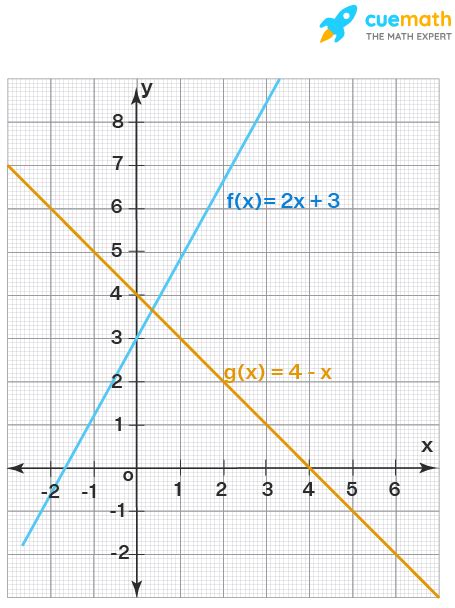Whats A Linear Function

Linear functions are fundamental concepts in mathematics and are used extensively in various fields, including physics, economics, computer science, and engineering. A linear function represents a simple, direct relationship between two variables, often denoted as x and y, where one variable depends linearly on the other. This relationship is characterized by a straight line when plotted on a graph, hence the term "linear."
Understanding Linear Functions

At its core, a linear function can be expressed mathematically as y = mx + b, where y and x are variables, m is the slope of the line (representing the rate of change), and b is the y-intercept (the point where the line crosses the y-axis). The slope m determines the steepness of the line, while the y-intercept b indicates the starting point on the y-axis.
Key Characteristics of Linear Functions
-
Straight Line Equation: The equation y = mx + b is the fundamental representation of a linear function. This equation ensures that the relationship between x and y results in a straight line when graphed.
-
Rate of Change: The slope m determines how quickly the function changes. A positive slope indicates an upward-sloping line, while a negative slope represents a downward slope. A slope of zero results in a horizontal line.
-
Y-Intercept: The y-intercept b is the point where the line crosses the y-axis (when x is zero). This point provides valuable information about the function’s behavior and can be used to solve for specific values of y when x is known.
-
Linearity: Linear functions exhibit a consistent rate of change. This means that for every unit increase in x, the value of y changes by the same amount, as determined by the slope m.
Applications of Linear Functions
Linear functions find applications in a wide range of areas:
-
Physics: Linear functions can model the motion of objects with constant velocity. For instance, the position of an object moving at a constant speed can be described by a linear function.
-
Economics: Linear demand curves in economics represent how the demand for a product changes with its price. Similarly, linear supply curves show the relationship between supply and price.
-
Computer Science: Linear algorithms are used in various computational tasks, such as sorting and searching, where the time complexity is directly proportional to the input size.
-
Engineering: Linear functions are essential in engineering calculations, including structural analysis, electrical circuit design, and fluid mechanics.
Real-World Example
Consider a simple example of a linear function: y = 2x + 3. Here, the slope m is 2, indicating that for every unit increase in x, y increases by 2. The y-intercept b is 3, meaning the line crosses the y-axis at the point (0, 3). When x is 0, y is 3, and when x is 1, y becomes 5, and so on.
| x | y |
|---|---|
| 0 | 3 |
| 1 | 5 |
| 2 | 7 |
| 3 | 9 |

This table illustrates how the values of x and y are related in a linear fashion.
FAQ

What is the difference between a linear function and a nonlinear function?
+A linear function represents a direct, proportional relationship between variables, resulting in a straight line when graphed. In contrast, a nonlinear function does not follow a straight line; its graph may curve or have other non-linear shapes. Nonlinear functions are more complex and can represent a wide range of relationships.
Can a linear function have a slope of zero?
+Yes, a linear function with a slope of zero is a horizontal line. This means that regardless of the value of x, y remains constant. It represents a situation where the function’s value does not change with x, and the line is parallel to the x-axis.
How do you find the y-intercept of a linear function?
+The y-intercept of a linear function is the point where the line crosses the y-axis. To find it, you can set x to zero in the equation y = mx + b and solve for b. So, if you have the equation y = 3x + 2, the y-intercept is (0, 2), as 2 = 3(0) + 2.



